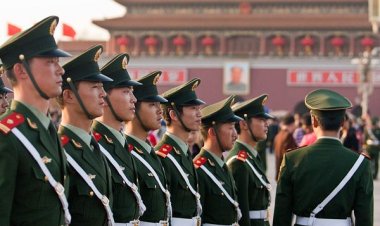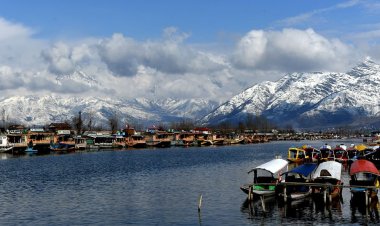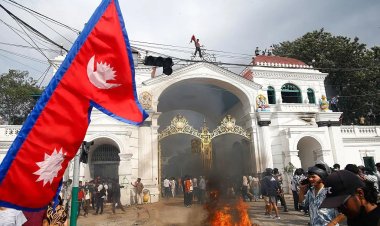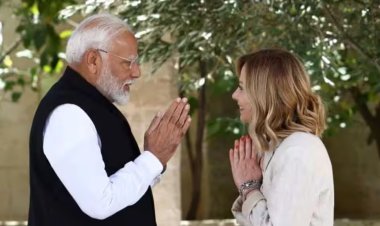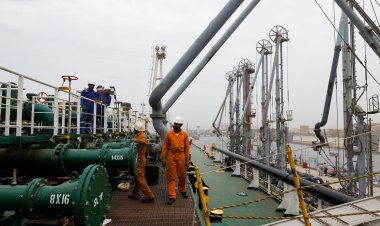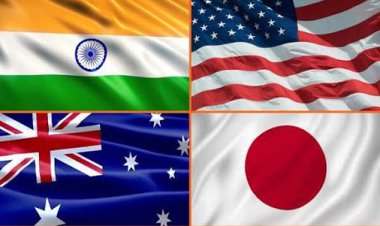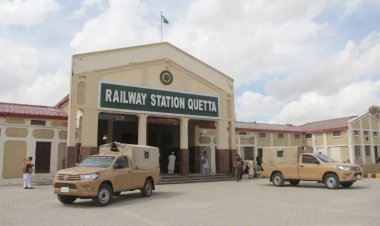Are India and Armenia Moving Toward a Strategic Partnership?
India’s robust relationship with Armenia may be put on hold by the shift in the Caucasus’ balance of power.
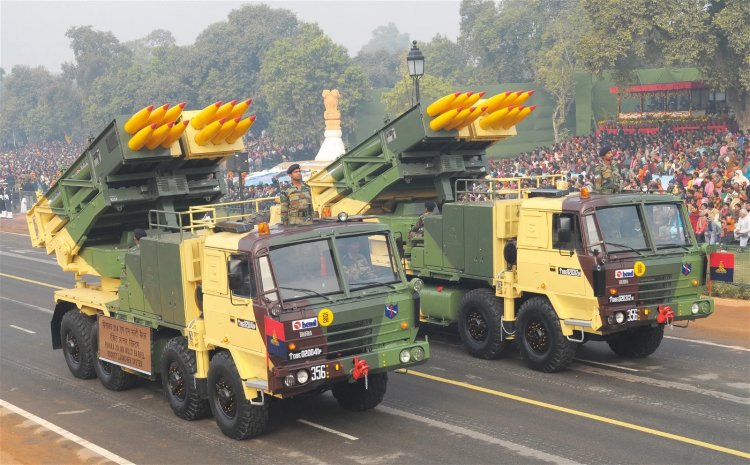
Analysis
By Dr. Abhinav Pandya
When it comes to Indian geopolitical maneuvers, the global strategic community feels that India punches much below its weight, mostly confined to South Asia. Until recently, India’s strategic calculus was primarily limited to Pakistan, followed by China. Its outreach to the Western world was largely economic and cultural, barring a minor strategic component dwelling upon defense deals. However, after the Chinese incursions in Doklam and Galwan worsened the India-China relationship and the involvement of extra-regional actors like Turkey in the Kashmir conflict, India’s foreign policy vision, approach, and strategic calculus are expanding beyond South Asia. Some of its manifestations include India’s interest in the Indo-Pacific, global strategic connectivity projects like IMEC, an upsurge in India-Greece bilateral ties, and New Delhi’s enthusiastic showmanship during its G20 presidency.
In the last three years, India has emerged as a major weapons supplier to Armenia. These big-ticket defense deals include the sale of Pinaka multi-barrel rocket launchers, a $40 million contract of SWATHI weapon-locating radars, ammunition anti-tank missiles, and 155 mm artillery guns. The author’s interlocutors in India’s Ministry of External Affairs informed that Armenia is interested in more defense deals, including drones and counter-drone systems, loitering munitions, and mid-range surface-to-air missiles. In October 2022, Armenia’s defense minister, Suren Papikyan, visited the New Delhi defense expo and met his Indian counterpart, Rajnath Singh.
In Sept 2022, both countries signed memoranda of understanding (MOUs) in culture, digital infrastructure, and renewable energy to promote business ties at the India-Armenia Conference 2022 in Bengaluru. The delegates explored the trade and investment potential in pharmaceuticals, agriculture, information technology, cinema, and tourism. Additionally, one can witness an uptick in think tank-level cooperation between India and Armenia. Most recently, the author represented the Usanas Foundation at the Yerevan Dialogue Series organized by the leading Armenian think tank Orbeli Center, which functions under the Armenian Prime Minister’s Office. Another top-level think tank, the Applied Policy Research Institute (APRI), will also organize the next dialogue series with the Observer Research Foundation, an Indian think tank in partnership with the Ministry of External Affairs.
All these developments rest on the solid bedrock of robust cultural and historical ties between the two countries that have existed for centuries. The Armenian business community has lived in India for over four centuries. Kolkata is home to centuries-old Armenian churches. The first draft of a constitution for the Armenian nation was drawn up in Chennai.
Strategic Connectivity and Geopolitics
Until the 2020 war, India more or less had a clear stand, backing Armenia against Azerbaijan’s territorial aggression. Turkey and Pakistan’s support of Azerbaijan made it all the more essential for India to support Armenia. In 2017, Turkey, Azerbaijan, and Pakistan signed a trilateral ministers’ agreement to boost defense and strategic ties. Notably, Azerbaijan has declared its support for Pakistan on the Kashmir issue, whereas Armenia supports India. Turkey-Pakistan relations extend back to 1947. After India abrogated Kashmir’s special status in 2019, Turkey emerged as a diehard proponent of Pakistan’s position against India. Under Erdogan’s Islamist leadership and Pan-Turkic ambitions, Ankara’s interest and support of Pakistan strengthened, and anti-India diatribes have become vitriolic. More recently, the author’s interlocutors have suggested that Erdogan’s private paramilitary force, SADAT, may be active in sending highly trained mercenaries to Kashmir.
In addition to counter-balance Turkey and Pakistan, India also looks at Armenia as a nodal point to expand its strategic and economic outreach to the South Caucasus. Delhi’s most critical interests in this region lie in the strategic connectivity projects. India’s interest in the INSTC (International North-South Corridor), of which Armenia is a part, is firmly rooted in its quest for land connectivity to Eurasia, Central Asia, and Europe through the Iranian plateau, otherwise blocked by Pakistan and Afghanistan. With this intent, India aims to extend INSTC to Armenia, connecting Chahbahar port in South East Iran to European and Eurasian markets. India and Iran have two options- railway lines connecting North Western Iran to Russia or the Black Sea through Armenia’s Syunik province or via the Caspian Coast through Azerbaijan. Armenia is a natural choice for India because of Azerbaijan’s proximity to Pakistan and Turkey. Armenia is also keenly interested in INSTC. Yerevan announced an alternate road to Iran in May 2021 to connect Iranian ports to Georgian ports via Armenia. During the Indian foreign minister’s 2021 visit, Armenia also proposed a scheme allowing the transportation of Indian products to Russia and the Black Sea via Armenia. All these initiatives bring the INSTC closer to reality.
Given the abovementioned developments, it is reasonable to conclude that both countries are moving towards a robust strategic partnership. However, India’s relative silence after the fall of Nagarno-Karabakh in 2023 indicates a moderate decline in New Delhi’s enthusiasm for the relationship and a sense of guarded optimism bordering on skepticism. Perhaps, after Azerbaijan cemented its control over Nagarno-Karabakh, India now feels insecure about its investments and plans for strategic connectivity projects in this region. India may reconsider its abovementioned preference for the Syunik transit route because of the Zanzegur region that falls within it. Baku has made claims to the Zanzegur corridor as it provides unimpeded access to its exclave of Nakchivan. Given the revisionist intent of Azerbaijan, these threats originating from Baku can not be underestimated. Hence, the prevailing instability and volatile security situation may dampen India’s enthusiasm for a transit route through Syunik.
Nevertheless, India faces a tough choice. India is deeply invested in the Chahbahar project and eyes INSTC as a critical connectivity project to obtain overland routes to Europe. Despite the hindrances from sanctions against Iran and Russia and major differences over the arbitration issues with Iran, India has finalized a ten-year contract with Iran for the use of Chahbahar port.
India’s West Asia expert and former envoy to many Middle Eastern countries, Ambassador Anil Trigunayat, said in a telephone interview that after the Ukraine war, Russians have become very serious about the rapid execution of INSTC to gain access to Chahbahar through the Indian Ocean, to counter the European sanctions. India does not want to miss this opportunity. He further said that if India shows a lack of interest, China will likely occupy that space as it already has strong ties with Russia. India’s dependence is further accentuated by the declining prospects of the IMEC (India-Middle East Europe Corridor) after the Israel-Hamas war.
Hence, whether these vulnerabilities will compel India to explore the Azerbaijan route for INSTC against the backdrop of the Turkey-Pakistan-Azerbaijan alliance remains a million-dollar question.
In addition to the abovementioned factors, the increasing involvement of global powers in the South Caucasus can also impede the transformation of the India-Armenia relationship into a strategic partnership. After Russia’s lukewarm response to the war with Azerbaijan, there is a marked Armenian shift toward the United States, which is making Moscow uncomfortable. In the recent Russia-Ukraine war, India had to face tremendous pressure from the Western powers to abandon Russia. Given its aversion to alliances, New Delhi would avoid getting caught in another cold war front between the United States and Russia. Also, India’s strong ties with Israel, Iran’s arch-enemy, and Iran’s with China, India’s arch-enemy, will make it increasingly challenging for India to continue and further its involvement in Russia-Iran-led INSTC. The worst-case scenario for India will be the passage of INSTC through Azerbaijan. Hence, it can be argued that in the prevailing uncertainty and instability in the South Caucasus, India will prefer to move ahead on a bilateral trajectory with Armenia, with a particular focus on defense deals and economic ties.
Disclaimer: This paper is the author's individual scholastic contribution and does not necessarily reflect the organization's viewpoint.


